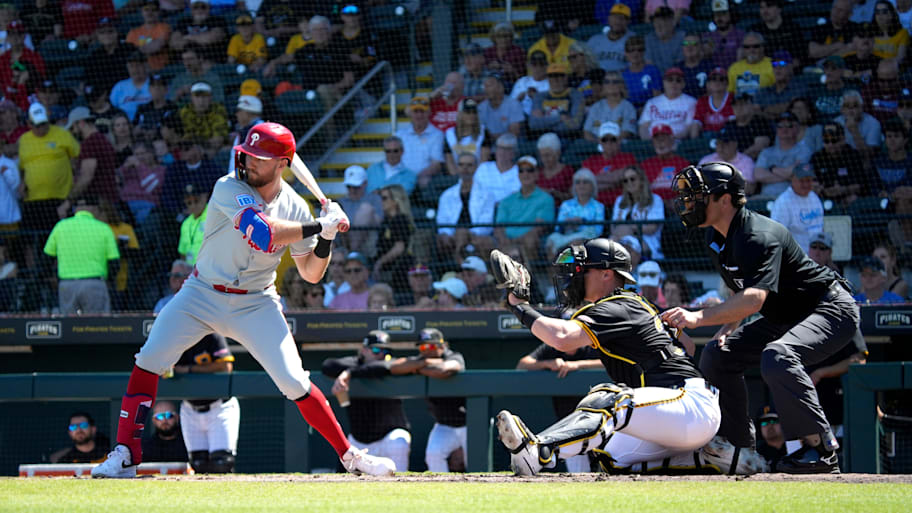Ever since Billy McLean became the first major league umpire in 1876, the umpire has been baseball’s Supreme Court—the highest court in the land. It helped McLean’s authority, too, that he was a former boxer. One hundred forty-nine years of absolute authority on balls and strikes ended Tuesday. The ABS Challenge System is coming next season to MLB. Think of it as an appellate court, in which players can petition technology to overrule Supreme Court Justice Umpire.
This was inevitable, and it is a good thing for baseball, both of which were obvious when the system was tested in major league spring training games this year after some lab work in the minors.
Still, change can be scary. You’ve got questions. We’ve got answers.
Why is it called ABS? Does it have anything to do with my car?
It’s an acronym for Automated Ball Strike Challenge System. It was approved Tuesday by the Joint Competition Committee, which is comprised of six owners, four active players and one active umpire. The vote was not unanimous, but in a mild surprise, not all players on the committee voted against it.
How many pitches will get the challenge treatment?
Each team gets two challenges, plus one in each extra inning if they have used their challenges. A team retains its challenge if it is successful. The spring training challenges averaged 4.1 per game.
Wait, I thought baseball was big on keeping a faster pace. Doesn’t this slow the game?
The average spring training challenge took 13.8 seconds. At 4.1 challenges per game, we’re talking an additional 57 seconds. I think you can handle that.
What happens to pitch framing? Won’t teams just put a pair of cement hands behind the plate now that technology is the backstop?
No. Ninety-eight percent of pitches will not be challenged. The value of pitch framing will be diminished, but teams must be so judicious in when to use their challenges that presenting pitches will still be important.
Aren’t we losing the human element?
Yes, if you consider an obvious blown call as a human element worth preserving. The limit on challenges is designed with the same purpose replay is used on the bases: nobody wants to see games decided on an egregious call.
And ABS adds a new layer to the human element: the strategy and skill of when to challenge. Catchers are the best at getting a call overturned (56% in the spring training test). Pitchers are the worst (41%). Hitters were in the middle (50%). Now a catcher who is expert at judging the strike zone will have a competitive edge for his team. Judgment on the zone and when to challenge will be a huge part of the catcher skill set.
Is the strike zone changing?
No. It did change in the minors, with a lowering of the top of the zone. The major league strike zone remains the same. The height of every player, as they were last year, will be measured in spring training to determine their individual zone: 53.5% of the player’s height at the top and 27% at the bottom.
What about those strike zones we see on television broadcasts?
Good news. The strike zone you will see on TV next year will be the official ABS strike zone. Broadcasters will be using the same technology. That’s not true now, which creates confusion for viewers because they often differ slightly from the real zone.
What do the umpires think about this?
The umpires knew technology was advancing so fast that this was inevitable. Umpiring keeps improving, in part because umpires are trained with the help of technology rather than calling their personal strike zone. They want to get it right and often do. Remember, teams could challenge pitches in spring training, and because of the two-challenge limit they had to reserve their challenges for when they were convinced the call was wrong. And the umpires were right 47.8% of the time—basically a coin flip.
Is this good for fans?
Yes. Watching the video unfold on the scoreboard in real time on a challenge is terrific fan engagement. You find out at the same time as players. Strike or ball? Watching the arc of the pitch entering the zone is good theater.
Everything has a cost. What are we losing?
If you get a kick out of Yankees manager Aaron Boone blowing a gasket, I guess you’ll miss his rants directed at the home plate umpires. Got a beef with the umpire? Just challenge. Boone gets thrown out once every 26.4 games, about the same rate as all-time umpire frenemy Earl Weaver, which is amazing when you consider Boone has had replay available on calls on the bases.
This article was originally published on www.si.com as Everything You Need to Know About MLB's New ABS Challenge System.
